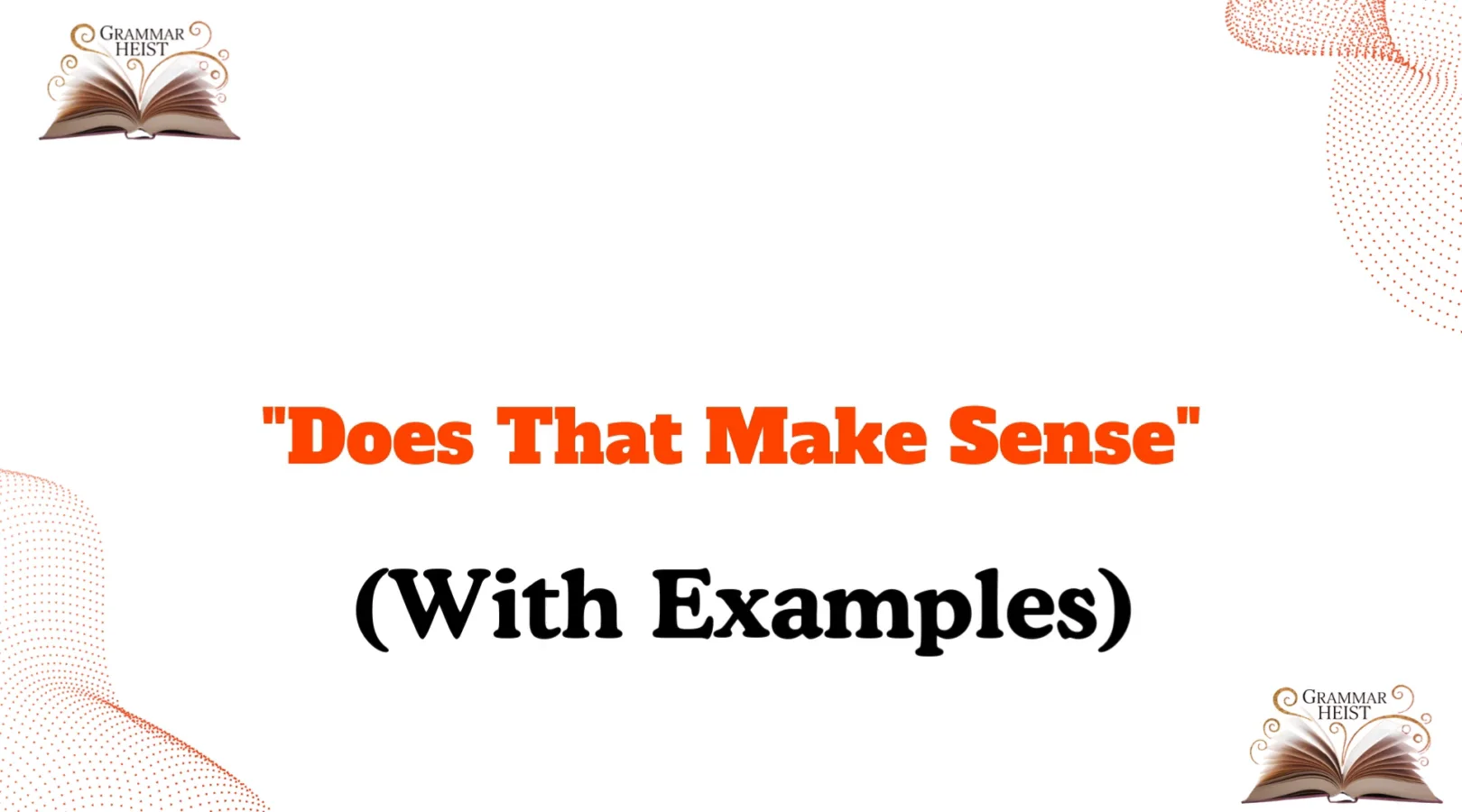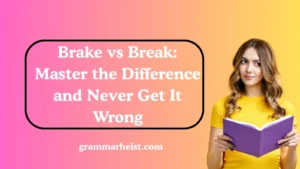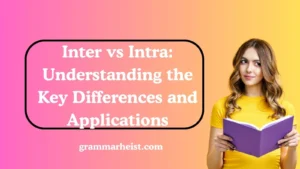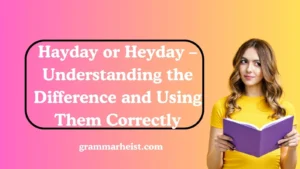Effective communication is an art. It’s about more than just conveying information; it’s about connecting, understanding, and ensuring that the person you’re speaking to feels heard and respected. Choosing the right words can have a huge impact, especially when you’re explaining something important. The phrase “Does that make sense?” is commonly used, but there are so many other ways to ask for clarity while showing empathy and care.
These alternatives not only help to express your thoughts more thoughtfully but also make your interactions feel more personal. Here are 30 options that will help you add warmth and consideration to your conversations.
Is It Professional/Polite to Say “Does That Make Sense?”
Yes, “Does that make sense?” is generally polite, but it can come off as a little abrupt or overly simple in certain situations, particularly in professional or formal contexts. Offering alternatives helps you sound more refined and thoughtful, which can improve both personal and professional relationships.
Pros and Cons of “Does That Make Sense?”
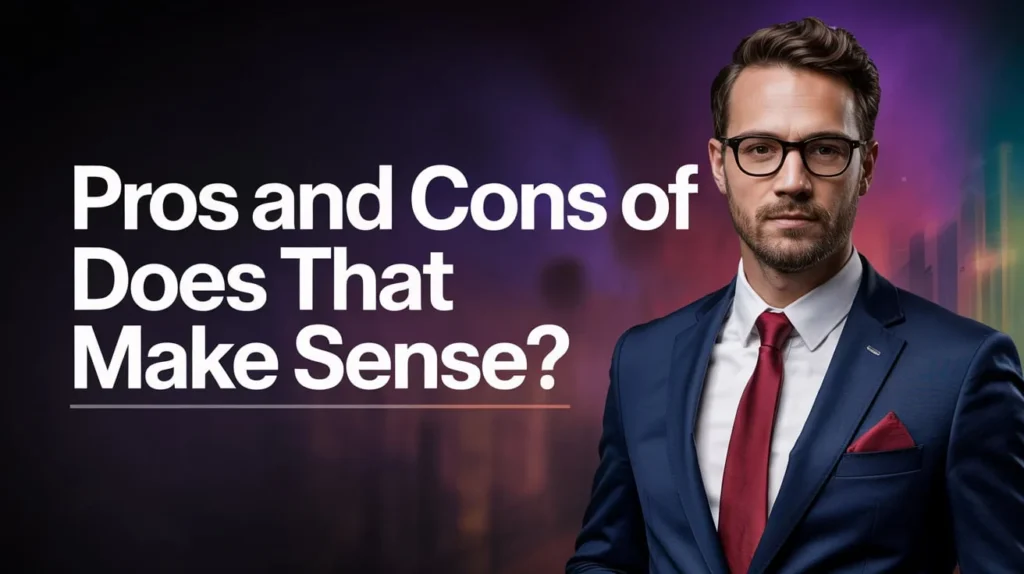
Pros:
- Quick and direct way to check if someone understands.
- Simple and easy to use in casual settings.
- Works well in informal or one-on-one conversations.
Cons:
- Can sound overly casual or dismissive in formal settings.
- May feel robotic or impersonal if used too often.
- Might come across as checking for agreement instead of understanding.
Synonyms For Does That Make Sense
- Is that clear?
- Does that make sense to you?
- Is everything clear?
- Are we on the same page?
- Do you follow?
- Does that sound good?
- Are you with me?
- How does that sound?
- Can you see what I mean?
- Is that understandable?
- Do you get it?
- Is everything alright so far?
- Does that seem clear?
- Are we in agreement?
- How do you feel about that?
- Does that add up?
- Does that seem reasonable?
- Is that okay?
- Do you see where I’m coming from?
- Does that work for you?
- Is that something you understand?
- Are you following along?
- Does that resonate?
- Do you agree with that?
- Is that the picture you had in mind?
- Do you grasp what I’m saying?
- Are we aligned?
- Do you understand where I’m going with this?
- Is that clear enough?
- Can we move forward from here?
1. “Is that clear?”
Scenario: Checking if your instructions or explanation are understood.
Examples:
- “I’ve laid out the schedule for next week. Is that clear?“
- “The process for submitting the report is straightforward. Is that clear?“
- “I want to make sure you understand the new policy. Is that clear?“
Tone: Neutral, professional.
Explanation: This is a straightforward and neutral alternative that keeps things clear and to the point, making sure the listener understands.
2. “Does that make sense to you?”
Scenario: Gently ensuring someone understands without pressure.
Examples:
- “We’ll meet at 3 PM tomorrow, and the meeting should last about an hour. Does that make sense to you?“
- “I’ve provided all the details on the new process. Does that make sense to you?“
- “If anything is unclear, let me know. Does that make sense to you?“
Tone: Friendly, warm.
Explanation: This alternative is personal and invites feedback in a conversational tone, making the other person feel at ease.
3. “Is everything clear?”
Scenario: Confirming understanding in a group or one-on-one setting.
Examples:
- “I’ve gone over the points for the project. Is everything clear?“
- “You’ve received all the necessary documents, right? Is everything clear?“
- “Let’s ensure there’s no confusion before we move forward. Is everything clear?“
Tone: Inquisitive, open.
Explanation: This is a direct, simple way to check if all aspects of a conversation or instructions are understood.
4. “Are we on the same page?”
Scenario: Ensuring alignment in understanding or plans.
Examples:
- “Let’s go over the details of the meeting one more time. Are we on the same page?“
- “We’ve covered all the points. Are we on the same page about the next steps?”
- “I just want to be sure we’re in sync here. Are we on the same page?“
Tone: Collaborative, team-oriented.
Explanation: This alternative emphasizes mutual understanding and promotes teamwork, which is helpful in group settings.
5. “Do you follow?”
Scenario: Confirming someone’s understanding in a casual or informal way.
Examples:
- “The first step is to gather the data, then analyze it. Do you follow?“
- “I’ve outlined the steps here. Do you follow so far?”
- “We’ll be meeting on Friday to discuss it. Do you follow?“
Tone: Casual, informal.
Explanation: This phrase is best used in more laid-back settings when you want to check someone’s understanding in a less formal way.
6. “Does that sound good?”
Scenario: Ensuring that the person is comfortable with the proposed plan.
Examples:
- “We’ll meet at 9 AM tomorrow to start the project. Does that sound good?“
- “I’ve finished the report draft. Does that sound good to you?”
- “We’re planning for a 3-day trip. Does that sound good to you?”
Tone: Friendly, collaborative.
Explanation: This phrase makes the conversation feel more relaxed and collaborative, as it asks for agreement but in a warm way.
7. “Are you with me?”
Scenario: Checking if someone is following along with your thoughts or ideas.
Examples:
- “We’ve gone over the budget breakdown. Are you with me so far?”
- “I’ll start with the first point and walk you through the process. Are you with me?“
- “I know it’s a lot of information. Are you with me on this?”
Tone: Friendly, supportive.
Explanation: This phrase invites participation and ensures that everyone is engaged and understanding the conversation.
8. “How does that sound?”
Scenario: Gaining feedback or gauging understanding after making a suggestion or providing information.
Examples:
- “We could take a break in an hour. How does that sound to everyone?”
- “I think we should finalize the project timeline. How does that sound to you?”
- “I’ll send the email by tomorrow. How does that sound?”
Tone: Warm, inclusive.
Explanation: This phrase checks for understanding while also being open to any suggestions or thoughts, keeping the conversation flowing.
9. “Can you see what I mean?”
Scenario: Asking someone if they understand or agree with your perspective.
Examples:
- “The new system will make the process faster. Can you see what I mean?”
- “By simplifying the steps, we save time. Can you see what I mean?”
- “If we use this approach, it’ll reduce errors. Can you see what I mean?”
Tone: Reflective, engaging.
Explanation: This phrase invites a deeper connection and shows that you value the other person’s perspective.
10. “Is that understandable?”
Scenario: Ensuring clarity without sounding too formal.
Examples:
- “I’ve walked you through the plan. Is that understandable?”
- “I broke down the steps into simple terms. Is that understandable?”
- “Let me know if something isn’t clear. Is that understandable?”
Tone: Gentle, considerate.
Explanation: This is a polite and thoughtful way of checking for understanding without sounding too abrupt.
11. “Do you get it?”
Scenario: Checking if someone understands in a straightforward, informal way.
Examples:
- “This shortcut will save you time when editing. Do you get it?“
- “If we take this approach, we’ll minimize errors. Do you get it?“
- “I just explained the process. Do you get it?“
Tone: Casual, direct.
Explanation: Best used in informal conversations. Be cautious, as it might sound too blunt in professional settings.
12. “Is everything alright so far?”
Scenario: Checking in during an explanation to ensure the listener isn’t overwhelmed.
Examples:
- “We’ve covered the first three steps. Is everything alright so far?“
- “I know this is a lot of information. Is everything alright so far?“
- “I want to make sure I’m explaining this clearly. Is everything alright so far?“
Tone: Supportive, warm.
Explanation: This phrase makes the other person feel cared for and comfortable asking for clarification.
13. “Does that seem clear?”
Scenario: Ensuring your point is coming across without putting pressure on the listener.
Examples:
- “The deadline is Friday at noon. Does that seem clear?“
- “We’ll need to follow these guidelines. Does that seem clear?“
- “I want to be sure you have all the details. Does that seem clear?“
Tone: Professional, reassuring.
Explanation: This phrase keeps things polite while checking for understanding.
14. “Are we in agreement?”
Scenario: Ensuring that both parties are aligned, often in professional discussions.
Examples:
- “We’ll proceed with the original plan. Are we in agreement?“
- “We agreed to finalize the report by Monday. Are we in agreement?“
- “Before moving forward, I want to confirm. Are we in agreement?“
Tone: Formal, direct.
Explanation: This phrase ensures mutual understanding, particularly useful in workplace or negotiation settings.
15. “How do you feel about that?”
Scenario: Encouraging the listener to share their thoughts or concerns.
Examples:
- “We’ll assign you the new project. How do you feel about that?“
- “I suggested a different approach. How do you feel about that?“
- “Let’s move forward with this plan. How do you feel about that?“
Tone: Thoughtful, engaging.
Explanation: This phrase invites feedback and makes the conversation feel more collaborative.
16. “Does that add up?”
Scenario: Ensuring logical clarity, often in discussions involving numbers or reasoning.
Examples:
- “The budget breakdown is here. Does that add up?“
- “We need to adjust our calculations. Does that add up?“
- “This approach will save costs. Does that add up?“
Tone: Analytical, logical.
Explanation: Useful in conversations involving math, finance, or problem-solving.
17. “Does that seem reasonable?”
Scenario: Seeking agreement while ensuring the listener understands.
Examples:
- “We’ll split the workload evenly. Does that seem reasonable?“
- “Let’s move forward with this budget. Does that seem reasonable?“
- “Given the timeline, we’ll need extra hands. Does that seem reasonable?“
Tone: Considerate, open-ended.
Explanation: This phrase keeps the conversation balanced and respectful.
18. “Is that okay?”
Scenario: Asking for confirmation in an easy-going, non-intimidating way.
Examples:
- “Let’s set the meeting for Tuesday. Is that okay?“
- “I’ll explain this part again if needed. Is that okay?“
- “We need to make a quick decision. Is that okay?“
Tone: Gentle, friendly.
Explanation: This phrase works well in casual and professional settings.
19. “Do you see where I’m coming from?”
Scenario: Ensuring that your viewpoint is understood.
Examples:
- “I think this method is better. Do you see where I’m coming from?“
- “I want to avoid unnecessary steps. Do you see where I’m coming from?“
- “By doing it this way, we save time. Do you see where I’m coming from?“
Tone: Thoughtful, explanatory.
Explanation: Encourages deeper discussion and helps align perspectives.
20. “Does that work for you?”
Scenario: Checking if something fits the other person’s needs or schedule.
Examples:
- “We’ll schedule the meeting at 10 AM. Does that work for you?“
- “I’ll send you the report by Thursday. Does that work for you?“
- “We can split the tasks this way. Does that work for you?“
Tone: Flexible, accommodating.
Explanation: This phrase keeps conversations open-ended and considers the other person’s preferences.
21. “Is that something you understand?”
Scenario: Checking understanding with a gentle, thoughtful approach.
Examples:
- “I’ve broken down the task into smaller steps. Is that something you understand?“
- “This is the process we follow. Is that something you understand?“
- “We have two options here. Is that something you understand?“
Tone: Polite, considerate.
Explanation: This phrase emphasizes empathy and is less forceful, making it good for sensitive conversations.
22. “Are you following along?”
Scenario: Checking in during an explanation or presentation to ensure the listener isn’t lost.
Examples:
- “First, we’ll go over the main ideas. Are you following along?“
- “We’ve covered a lot. Are you following along?“
- “This is the next step. Are you following along?“
Tone: Casual, supportive.
Explanation: This phrase is great for when you want to keep the conversation moving while ensuring clarity.
23. “Does that resonate?”
Scenario: Asking if the information aligns with the listener’s understanding or experience.
Examples:
- “The strategy we’re using is proven to work in most cases. Does that resonate?“
- “This new concept might take some time. Does that resonate?“
- “You’ve been handling similar issues. Does that resonate?“
Tone: Reflective, thoughtful.
Explanation: This phrase goes beyond simple understanding and invites a deeper connection with the idea being shared.
24. “Do you agree with that?”
Scenario: Asking for agreement or alignment, often in decision-making or negotiations.
Examples:
- “Let’s finalize the budget with these numbers. Do you agree with that?“
- “I think we should move forward with this plan. Do you agree with that?“
- “The project is on track for completion next week. Do you agree with that?“
Tone: Assertive, collaborative.
Explanation: Useful in situations where feedback is needed to confirm alignment or mutual understanding.
25. “Is that the picture you had in mind?”
Scenario: Asking if the explanation or outcome matches the listener’s expectations.
Examples:
- “Here’s how the marketing campaign will look. Is that the picture you had in mind?“
- “We’re aiming for a minimalist design. Is that the picture you had in mind?“
- “This is the direction for the team. Is that the picture you had in mind?“
Tone: Reassuring, open.
Explanation: Great for situations where you want to check if both parties are on the same page with their goals or expectations.
26. “Do you grasp what I’m saying?”
Scenario: Checking if the listener understands the concept or argument clearly.
Examples:
- “We need to prioritize the most urgent tasks. Do you grasp what I’m saying?“
- “The timeline is tight, so we have to adjust. Do you grasp what I’m saying?“
- “The numbers just don’t add up. Do you grasp what I’m saying?“
Tone: Direct, slightly firm.
Explanation: While more direct than other alternatives, this phrase can be effective when clarity is essential, though it can feel a bit blunt in casual settings.
27. “Are we aligned?”
Scenario: Ensuring that both parties agree or are on the same track.
Examples:
- “We’ll follow this approach. Are we aligned?“
- “I believe we’re in agreement on the priorities. Are we aligned?“
- “We need to work towards the same goal. Are we aligned?“
Tone: Formal, professional.
Explanation: This phrase is especially useful in business contexts to confirm alignment in goals, strategies, or decisions.
28. “Do you understand where I’m going with this?”
Scenario: Asking if the listener follows the progression of thoughts or arguments.
Examples:
- “I’m explaining the need for a new policy. Do you understand where I’m going with this?“
- “We want to optimize our workflow. Do you understand where I’m going with this?“
- “The purpose of this change is to improve efficiency. Do you understand where I’m going with this?“
Tone: Informal, curious.
Explanation: This phrase is more conversational and helps ensure the listener isn’t confused as you walk through a complex point.
29. “Is that clear enough?”
Scenario: Checking if your explanation was sufficiently detailed or understandable.
Examples:
- “Here’s the detailed plan. Is that clear enough?“
- “This timeline should work. Is that clear enough?“
- “We need to stick to the guidelines. Is that clear enough?“
Tone: Gentle, polite.
Explanation: This phrase is reassuring, inviting feedback without being forceful. It works well in both casual and professional contexts.
30. “Can we move forward from here?”
Scenario: Asking if the listener is ready to continue after an explanation or discussion.
Examples:
- “I’ve outlined the key points. Can we move forward from here?“
- “We’ve settled on the plan. Can we move forward from here?“
- “The task is clear. Can we move forward from here?“
Tone: Action-oriented, assertive.
Explanation: This phrase signals readiness to proceed and ensures that the listener is comfortable continuing with the discussion.
Conclusion
These additional alternatives provide a range of approaches for ensuring understanding, from casual to formal settings. Tailor your language to the situation, and you’ll communicate with greater clarity and engagement.

Emma Brooke is a passionate advocate for effective communication and language mastery. As a dedicated professional in the field of grammar and writing, Emma brings a wealth of knowledge and expertise to those seeking to improve their linguistic skills. With a focus on clarity, precision, and style, Emma Brooke is committed to helping individuals refine their language use to communicate confidently and effectively.
